I’ve shown off this egg before on tours and on Twitter, so I thought I’d write a blog answering some of the most frequently asked questions I’ve received about this object, as well as share some fun facts about the egg, the Alien movies and our collections.
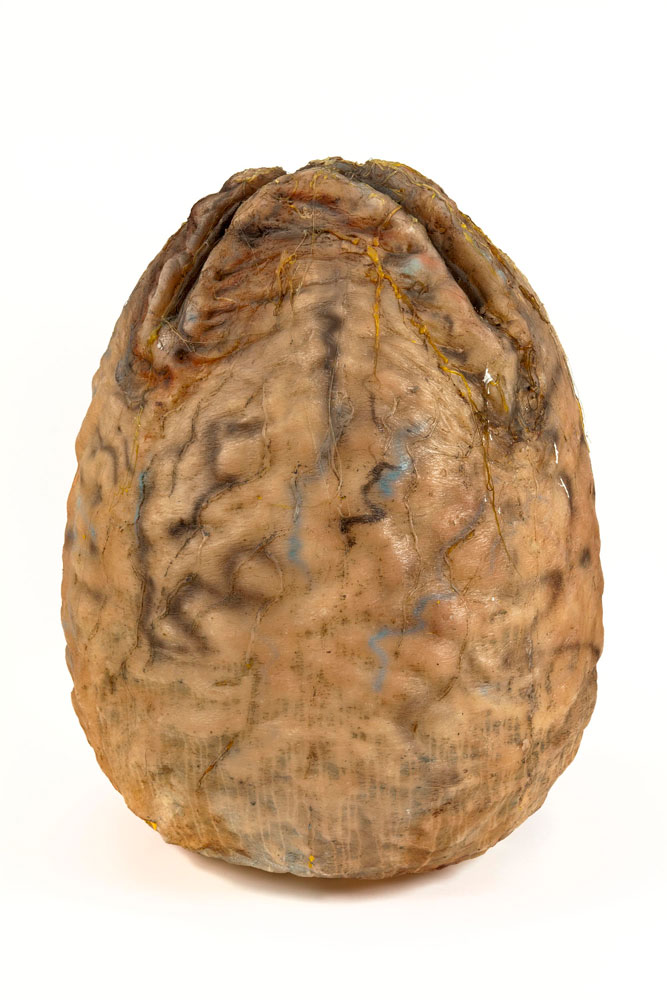
Is that a real alien egg?
Well it’s from an actual movie, if that’s what you mean. Think of claustrophobic spaceships, nail-biting tension and, of course, Sigourney Weaver, and you’re on the right track. It is, however, just a prop egg, and was almost certainly not laid by an alien queen (though I won’t rule anything out until I have proof). If you’re looking for something that is actually from space, I suggest checking out our selection of meteorites. It’s out of this world.
Fun fact
We also have a replica torso of a xenomorph (the extraterrestrial species in the films) in our collections that was used for promotional purposes. It’s incredibly creepy and scares me every time I go into the object stores.
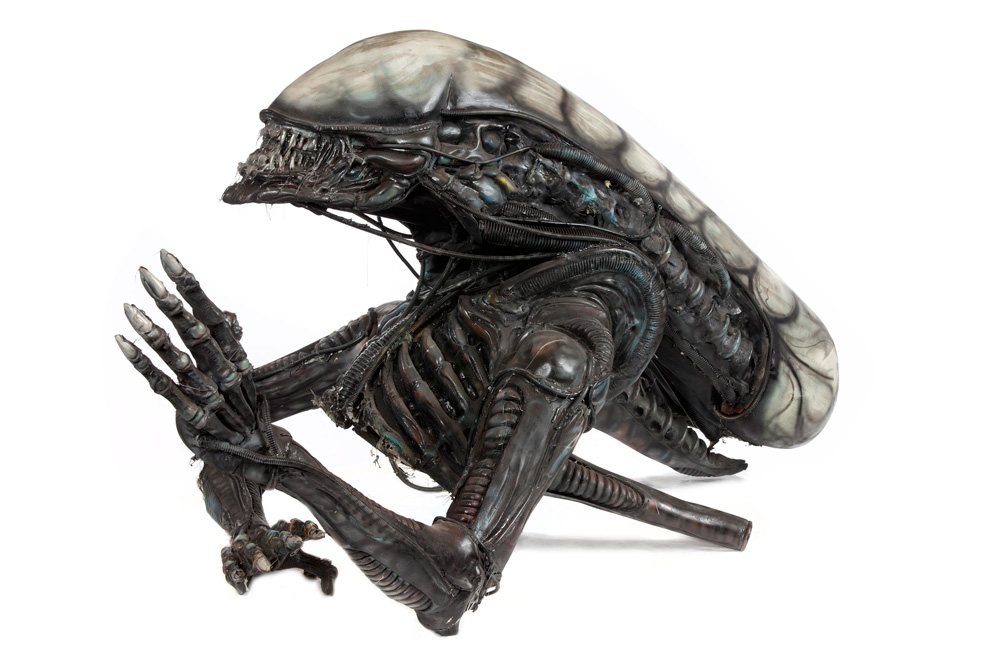
How many eggs were there?
In total, 130 eggs were produced for the original 1979 movie, all of which can be seen in the scene where the crew of the Nostromo enter the cargo hold of the derelict spaceship. This number includes the ‘hero egg’, which is the one that opens and allows the Facehugger out to attack. The rest, like our example, were just dummy eggs and not intended to move or open, so they lack the hydraulics that would make this possible.
As for how many of those 130 eggs are still around today, we don’t know. We are, as far as we are aware, the only museum with one of these eggs, but there could still be lots in private collections. However, the ‘hero egg’ likely isn’t still around, as many of its insides were made from animal parts, which won’t have survived for the last 40 years.
Fun fact
In Alien, you can see movement inside the ‘hero egg’ as it’s being inspected by crew member Kane. In the plot, this is the famous Facehugger that emerges and implants Kane with the titular alien. In reality the movement was created by the movie’s director, Ridley Scott, who inserted his hand (wearing gloves) through the bottom of the egg and moved it around to create the wiggling alien effect.
Why do you have this egg?
This is a question I’ve been asked many times. It can seem a little strange for a museum of science and industry to have an object from a work of fiction in its collections. However, we have a large collection of objects that relate to various creative industries, which we want to acknowledge as a legitimate form of industry, one which has been very significant for Manchester’s culture in the past few decades.
Additionally, one of our main aims at our museum is to inspire people to think about the future of humanity as our knowledge and scientific capabilities develop. One way we can do this is by looking at popular culture surrounding science, including science fiction. Now, we’re not saying that everything in science fiction is 100% possible (although we may be living in a simulation, so The Matrix might have been onto something), but there are many times where science fiction inspires real world science.
Famously, Martin Cooper, director of research and development at Motorola, has stated that the communicators used in Star Trek helped inspire the design for the first mobile phones in the 1970s, saying ‘That was not fantasy to us, that was an objective’. At the Science and Industry Museum we want to help our visitors to dream big and to reflect on the things that inspire their lives as they go on to shape our collective future, which is why we collect objects that may sometimes seem to be unusual choices for us, like this egg.
Fun fact
We have archives that relate to a Manchester company that may have made spacesuits for both science fiction and science reality. P. Frankenstein and Sons Ltd had connections to NASA in the run-up to the 1969 Moon landing and even lent a couple of their suits (which they claimed to be superior to NASA models) and one of their engineers, to NASA during the 1960s. It is also rumoured that Frankenstein made the spacesuits for the movie 2001: A Space Odyssey. You can find out more about Frankenstein and Sons in a previous blog post of mine.
Extra fun fact
This egg is only the tip of the iceberg of our amazing collections from famous science fiction franchises. We also have a Cyberman from Doctor Who lurking in our basement, as well as replica uniforms from Star Trek, and a model of the Millennium Falcon.
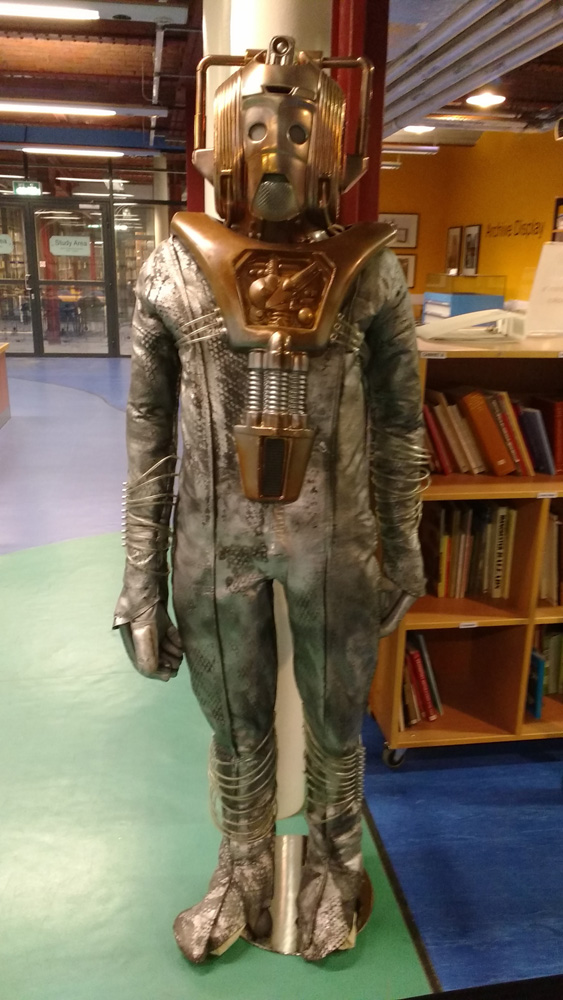
How do you look after an alien egg?
We have a team of conservators at the museum who work hard to make sure all of our objects are as well cared for as possible. We keep our objects secure in stores and check them regularly to make sure they are staying in the best possible condition. Our conservation student Mark Anderton recently did some cleaning work on the egg. He wanted to remove some dust that had collected on the egg while it was in storage. It’s not as simple as using some polish and a cloth though, as Mark says:
“A key principle of conservation is to intervene with an object as little as possible to improve its condition; we call this ‘minimal intervention’. With this in mind the surface of the egg was cleaned with very gentle, mechanical methods, avoiding using solvents as these could have affected the paint layers, adhesives or even the polymer of the egg itself.
“Firstly, the surface was dusted with a soft paintbrush, flicking the dust into a small vacuum cleaner. Several different types of vulcanised rubber sponges were gently rubbed across the surface to draw up any ingrained soiling. Finally, a very fine powder of rubber particles was brushed through the strands of adhesive with a paintbrush to draw up any soiling trapped between gaps on the uneven surface and then the granules removed with a low suction vacuum cleaner.”
Fun fact
During his work, Mark noticed that there were watermarks on the surface of the egg. After some research, he found that during filming the eggs had been covered in vegetable glycerine to make them look wet and alive on film. It was the remains of those residues that he was seeing. As they are part of the original purpose of the object he made sure to protect them during the course of his conservation work.
What’s inside it?
Disappointingly (or luckily!) the egg is just a shell and there’s no Facehugger inside waiting to leap out.
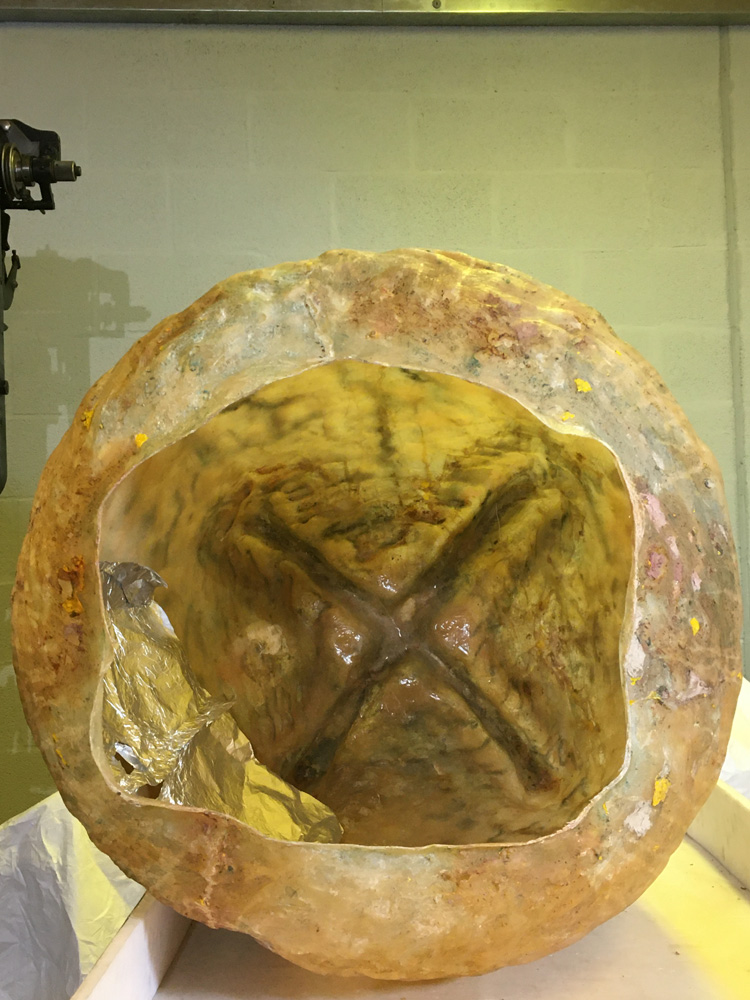
However, the egg isn’t completely empty. Inside is a piece of foil (close-up below). Mark reached out to some prop makers and they suggested it might have been used to make it look like there was a silhouette of an alien inside the egg when a light was shone through.
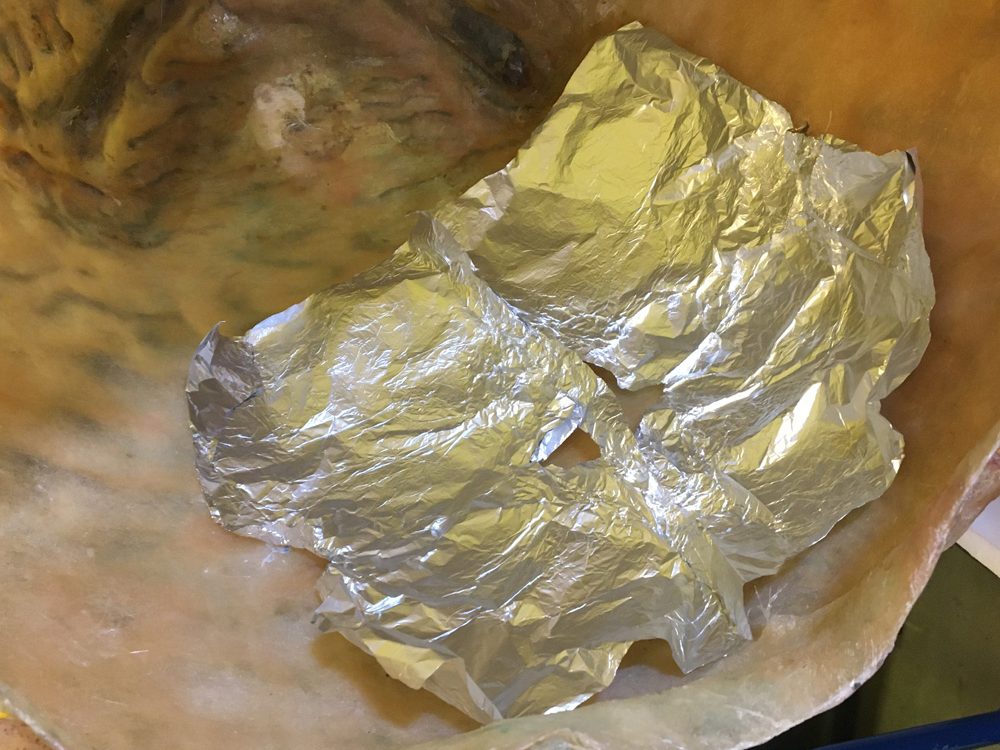
Fun fact
The blue lights used to illuminate the egg chamber in the movie were borrowed from the band The Who, as they were testing out lasers for their live shows in a nearby soundstage.
Do you have any other fun alien facts?
Thanks for asking! Did you know there is an xenomorph gargoyle decorating Paisley Abbey? It was added during a refurbishment of the building in the early 90s but seems to have escaped notice for about five years after it was installed, making it even sneakier than the alien it is modelled on. You can see pictures of the gargoyle and read more about it over on the BBC website.
I hope you’ve enjoyed this Q&A about our Alien egg. It remains one of my favourite objects in our collections to show off and is a great example of how science museums can use popular culture to engage visitors.
5 comments on “FAQs about our Alien egg”
Comments are closed.
The egg is from Aliens not the alien 1986 not 1979.
They were a different size and sculpt I know this as I had the molds for both eggs, the original sculpt for alien was a single opening but it was changed before filming.
I am an Armourer in the film industry and owned many props from these films including the pulse rifle from Aliens.
Ian- I recently acquired what I believe to be a genuine prop egg from one of the Alien films. It has “Limited Edition 2 of 5” written on the base with what looks like black marker and there are two signatures as well that I can’t make out. One of the signatures looks like the first name may be Alec. Could I possibly send you a picture to see if I could get more information? Thank you kindly.
Question, What is the height and largest width of this particular Aliens egg ? Would be nice to know for ppl who replicate designs for statues (and art pieces) in many scales.
Hi Martijn,
According to the egg’s Collection Online entry – https://collection.sciencemuseumgroup.org.uk/objects/co8407739/model-of-egg-used-in-the-film-alien-model-representation – the dimensions are:
Height – 790 mm; Width – 570 mm; Depth – 570 mm
I hope that helps!
Mike, Website Content Manager
I am fascinated by any information about the movie prop eggs, I have long wanted one as a room feature.
I realise I’m not going to find one, especially that’s affordable.
So I’m considering making one, using the same method.